#16th Dynasty
Explore tagged Tumblr posts
Text
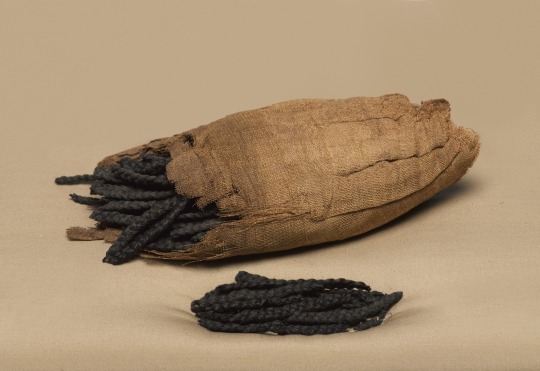
~ Bundle of Hair Extensions.
Date: ca. 2114-1502 B.C.
Period: Old Kingdom-early New Kingdom; 16th-18th Dynasty
Medium: Human hair, linen
▪︎ From the source: These hair extensions would have been placed in a tomb for use in the afterlife. In this world, Egyptians used extensions to make their wigs or natural hair thicker and more attractive, just as people do today. The reliefs in this case show hairdressers adding extensions like these to the hair or wig of Queen Neferu.
#ancient#ancient art#history#museum#archeology#ancient egypt#ancient history#archaeology#egyptian#egyptology#egypt#bundle of hair extensions#extensions#fake hair#queen tiye#old kingdom#new kingdom#16th Dynasty#18th dynasty#human hair#ca. 2114 b.c.#ca. 1502 b.c.
2K notes
·
View notes
Text


🗡July 28, 1540 — The Execution of Thomas Cromwell
'But the king can change his mind. He can do whatever we wills now. He has the absolute power. And what he has given, he can take it away.' — Anne Boleyn (2x06)
"Most gracious and most merciful sovereign lord, beseeching almighty God, whoever in all your causes has ever counselled perceived, opened, maintained, relieved and defended your highness so he now will save to counsel you, preserve you, maintain you, remedy you, relieve and defend you as may be most to your honour, wealth prosperity, health and comfort of your heart’s desires. For the which, and for the long life and prosperous reign of your most royal Majesty, I shall, during my life and while I am here, pray to almighty God that He of his most abundant goodness, will help aid and comfort you, and after your continuance of Nestor’s[13] years, that that most noble Imp, the prince’s grace, your most dear son, may succeed you to reign long, prosperously and felicitously to God’s pleasure, beseeching most humbly, your Grace to pardon this, my rude writing, and to consider that I am a most woeful prisoner, ready to take the death when it shall please God and your Majesty. Yet the frail flesh incites me continually to call to your Grace for mercy and pardon for my offences and in this, Christ save, preserve, and keep you. Written the Tower, this Wednesday the last of June, with the heavy heart and trembling hand of your highness’ most heavy and most miserable prisoner and poor slave. Most gracious prince, I cry for mercye, mercye, mercye!"
(source)
for you @cromwelll
#thomas cromwell#the tudors#james frain#tudor history#16th century#periodramaedit#gifshistorical#tudorerasource#tudor dynasty#english history#byfefa#by fefa#byme#period drama#historical drama#weloveperioddrama#onlyperioddramas#tvgifs#mediagifs
150 notes
·
View notes
Text


"She was, in the brief time allowed her, a good mother, incurring her husband’s displeasure by insisting on breastfeeding Elizabeth herself, which high-born mothers never did, and choosing pretty clothes for the child. She rarely saw her, however, for the Princess was given her own household at Hatfield House at three months old, and thereafter her mother could only visit when her other duties permitted."
#anne boleyn#perioddramaedit#the tudors#quotes#lyrics#history#thetudorsedit#elizabeth i#elizabeth tudor#becomingelizabethedit#becoming elizabeth#alicia von rittberg#beedit#tudorsedit#anneboleynedit#natalie dormer#alison weir#16th century#lana del rey#lyricsedit#thunder#queen anne boleyn#queen elizabeth i of england#perioddramasource#periodedit#women in history#women of history#tudor history#tudor dynasty#tudorerasource
255 notes
·
View notes
Text
THE SINS OF DESPINA HATUN
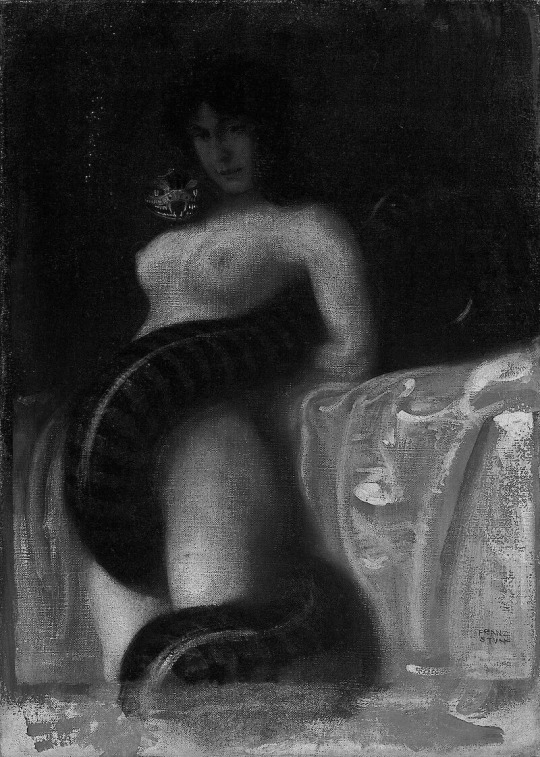
Since the 14th century, one woman has haunted the history of the Ottoman Empire and the very minds of their historians with her influence over a Sultan who suffered a hummiliating fate.
The only wife of a Sultan who has been the target of curses; Despina Hatun.
The reason for this great hatred of her has to do with the fact that she was influential and remain christian throughout her marriage. She was able to maitain the first and main place in the harem of her husband and to make him like her. A likeness that overtime grew into love and devotion.
Her wishes did not remain mere wishes, and for this reason the muslim associates of Sultan Yildirim Bayezid Han, as well as later Turksih historians resented her. Today most people remember her as “Bayezid’s great love”.
To Ottoman sources she was a fatal woman who lured their Sultan into sin. It can be concluded from that amount of hatred that she was allowed privileges and more power than was allowed for a foreign wife of a Sultan, or an imperial wife in general.
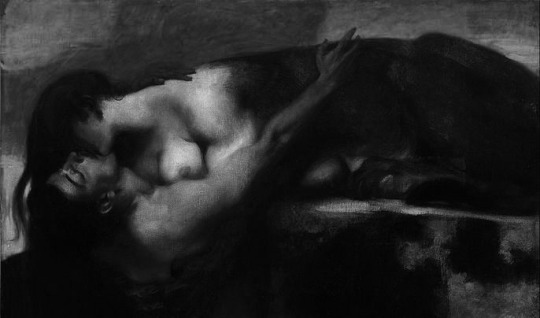
SHE MADE THE SULTAN FALL FOR HER
"As for Yıldırım, let's say that he fell in love with the princess." - Necdet Sakaoğlu. Bu Mülkün Kadın Sultanları, pg 83
"Throughout his life he was devoted to Despina, and his brother-in-law Stephen in turn was a devoted and steadfast friend." - Herbert Gibbons. The Foundation of the Ottoman Empire
According to Chalkokondyles, when Bayazit's favorite wife, Lazareva [daughter], whom he took everywhere with him into battle, was captured and handed over to Tamerlane, he ordered that wine be served to him there, in front of her husband. The enraged Bayazit told Tamerlane that what he was doing was not worthy of his father and mother. - Две српске султаније : Оливера Лазаревић (1373-1444), Мара Бранковић (1418-1487), pg 107
"When the latter's wife, the daughter of Lazar, whom he loved more than any of the others, had been taken away, and Timur was taking her around in the camp with him, he made her pour his wine in front of Bayezid, her husband." - Laonikos Chalkokondyles
"He kept her close – she accompanied him everywhere - he appeared unable to part from her. She was the one person, who influenced him most and was of course blamed by the Ottoman chroniclers for the fall of Beyazid’s empire into the hands of Timur. They considered the young sultan totally captivated by her."- Anna Buxton. The European Sultanas of the Ottoman Empire
It is widely understood that throughout their marriage Despina and Bayezid shared a devoted sentiment-perhaps more on his part-despite the circumstances that brought them together. The couple had similar interests such as politics, wine, partying, European customs, conversations and according to historians found constant erotic pleasure with each other. Though all of these cited interests might just be Ottoman historians attempts to depict this woman as deceitful.
" The sexually robust woman – she satisfies all his desires- but remains a Christian." - Richard Franz Kreutel performs a service to Ottoman polemic.
It is said that for some days, Bayezid remained in Despina's chamber and completely forgot about state affairs.
Olivera (Despina Hatun) is accused by Ottoman historians of using her charms and beauty to lure Bayezid to her. This seems highly untrue as Bayezid's harem is labeled as being filled with "forbidden beauties." He could have set his sight on another with more charm and beauty, and in fact he did, but still remained devoted to Despina.
It seems they use her beauty and political influence only as a means to label her as a Femme Fatale who is cunning, power-hungry and worst even, an infidel. Yet, when we look at foreign sources about the personality of Despina Hatun, she is describe as being gentle and flowery.

SHE WAS ALLOWED POLITICAL INFLUENCE
According to Dr. Zeljko Fajfric in his work "Srpske kraljice i princeze," released in 2007, no sultana before Olivera, who did not convert to Islam, managed to become so influential.
Yet something that is enough to critize him on is that he only puts this influence of hers to be due to her charms and beauty, yet again unintentionally labeling her as a femme fatale.
If beauty was all it took to have political influence, dozens more like her would have succeeded in that aspect, but she remains the only wife of Bayezid who had significant importance on politics.
Either Bayezid often sought after her opinion in matters of state or he took her as an advisor which might be the reason she was often with him, but no, a good scent, a soft spoken voice, long hair or enchanting glances will work, at least not for very long, even for a man prone to pleasure like Bayezi, and as we know Despina's political influence grew more with time than it decline.
A few things that are attributed to her council...
I: She helped accelerate the transfer of Prince Lazar's body back to Serbia.
II: She freed and paid ransoms for enslaved christians with the help of her brother; Stefan.

SHE BROUGHT DEBAUCHERY TO THE OTTOMAN COURT
Despina is often blamed for having introduced wine at the Ottoman court.
This sin that Bayezid's partook in can not be credited to Despina because he was already throwing such feasting assemblies ever since his princehood. Him and Despina married in 1390, he was well too familiar with wine and pleasure prior to their marriage.
Despina, later on, might have organized such festivities for him.
" Wine and kebab assembly was established. The infidel's daughter came and toasted Ali Pasha. The lady said, see the moment." - Aşıkpaşazade.
Still it is highly unlikely that Despina, who comes from a culture where married women do not speak in the presence of men would even partake in such assemblies filled with drunk men.
What is more likely is that she organized her own wine assemblies in the harem, with the presence of other women, but the chances of her doing such a thing as drinking in the presence of men is highly unlikely.
She might have even brought wine and so called debauchery to the once "pious" court of the harem, but as for the men; who take up the majority parties in politics and war, they were already familiar with the beverage.
#Bayezid The Thunderbolt#Olivera Despina Hatun#medieval#middle ages#Ottoman#Lazarevic Dynasty#Ottoman Dynasty#yildirim bayezid#15th century#16th century#Lazarevic dynasty#The Sins of DESPINA HATUN
310 notes
·
View notes
Text
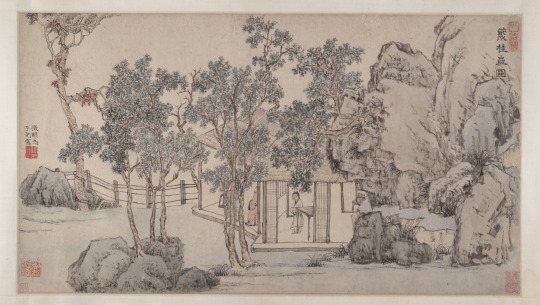
The Cassia Grove Studio (handscroll, ink and color on paper), Wen Zhengming, ca. 1532
#art#art history#Wen Zhengming#Asian art#China#Chinese art#East Asia#East Asian art#Imperial China#Ming Dynasty#landscape#landscape painting#landscape art#handscroll#ink and color on paper#16th century art#Metropolitan Museum of Art
56 notes
·
View notes
Text

Portrait of Magdalena of Saxony, Wife of Elector Joachim II of Brandenburg
Artist: Lucas Cranach the Elder (German, 1472–1553)
Date: c. 1529
Medium: Oil on panel
Collection: Art Institute of Chicago, Chicago, IL, United States
Description
As court painter to the electors of Saxony, Lucas Cranach the Elder developed a portrait style that catered to his patrons’ concern with dynastic continuity by emphasizing their princely status through careful depictions of their sumptuous garb and lavish jewelry. The artist’s attention to such details enabled the identification of this sitter: a signet ring in a companion portrait of her husband in the Philadelphia Museum of Art reveals her to be the Saxon princess Magdalena. A watercolor showing Magdalena in the same richly patterned dress suggests that Cranach made this portrait during his visit to Berlin around 1529.
#portrait#oil on panel#painting#lucas cranach the elder#german painter#german culture#magdalena of saxony#female#german royalty#patterned dress#german dynasty#luxury fashion#ostrich hat#jewelry#16th century painting#german history
8 notes
·
View notes
Text

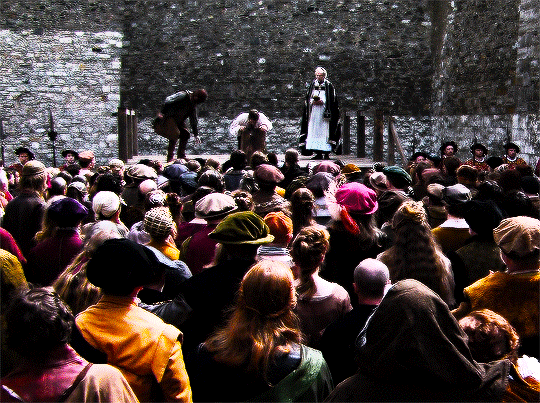



THE TUDORS (2007-2010) | 2x05
Why? ... Why can he not be like others? Why does he have to cross me? Why can his vanity be greater than a king's? It troubles me. It weighs on my conscience, and my heart is full, and heavy and sore. I say this only to you. I confess only to you. I LOVE HIM. AND I HATE HIM. I hate in equal measure to my love, for he is the spirit that denies. It is up to you to judge whether or not he be on my conscience."
#thetudorsedit#the tudors#thomas more#henry vii#lol i just realised the butcher has nothing in his hands haha#perioddramaedit#period drama#16th century#tudor era#tudor dynasty#historical fiction#s2#gifs#requests
106 notes
·
View notes
Text


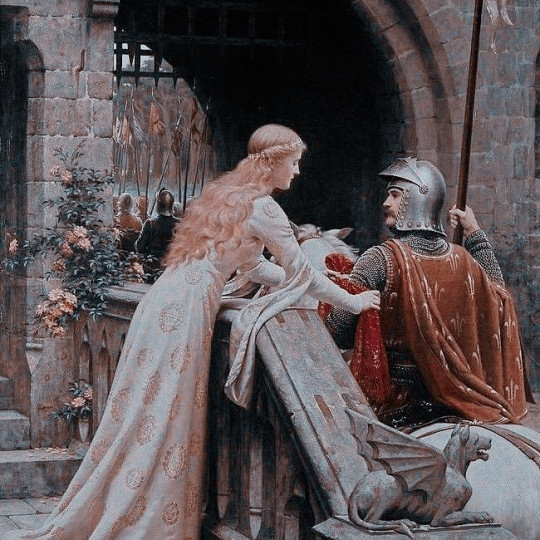






tudor week 23: favourite male tudor -
H E N R Y • V I I
son | king | welsh dragon | winter king | soldier | fighter | legend |
#henry vii#henry tudor#tudor dynasty#perioddramaedit#weloveperioddrama#15th century#16th century#house tudor#english history#tudor week 2023#dailytudors#myedit*#mine*
87 notes
·
View notes
Note
What do you think of Anne Boleyn?
Hello! :)
I'm sorry, but I don't know too much about Anne Boleyn - or about the Tudors in general - to have a concrete opinion about her. I'm not a historian, but an artist, so I can't present the situation at the level that a historian can.
Most of the information I have comes from various works of historical fiction, aka Philippa Gregory, Hilary Mantel, Brandy Purdy, etc., but these are fictional representations, whose narrative thread is constructed to serve the goals set by the author, and therefore must be treated as such.
I know that Anne is a rather controversial figure, considering the changes she was able to make in English history, which gives her a certain notoriety, but nothing more. She is not on my list of favourite historical figures, but I can't say that I dislike her either. Some people consider her guilty, others, on the other hand, consider her a victim. If you were to ask me, I would be inclined to be somewhere in the middle - I don't see Anne guilty of anything other than ambition (nothing unusual, in this case), and at the same time I refuse to believe that many of the accusations that were made against her had any grain of truth, their dubious veracity doing nothing but serving the interests of Henry VIII.
7 notes
·
View notes
Text
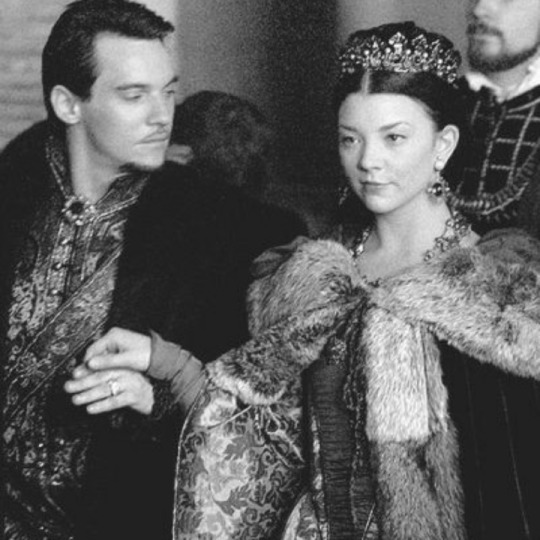
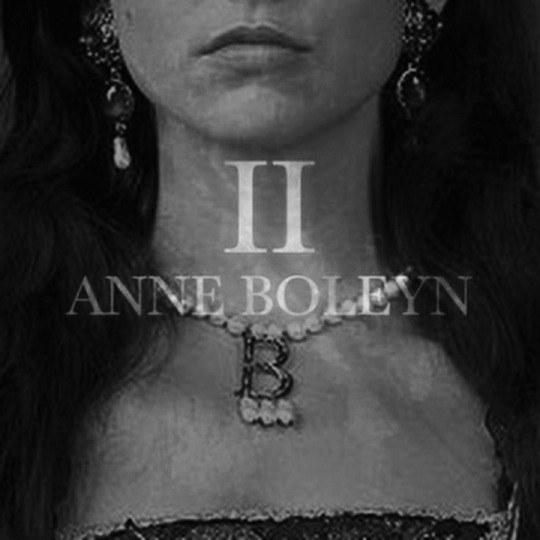


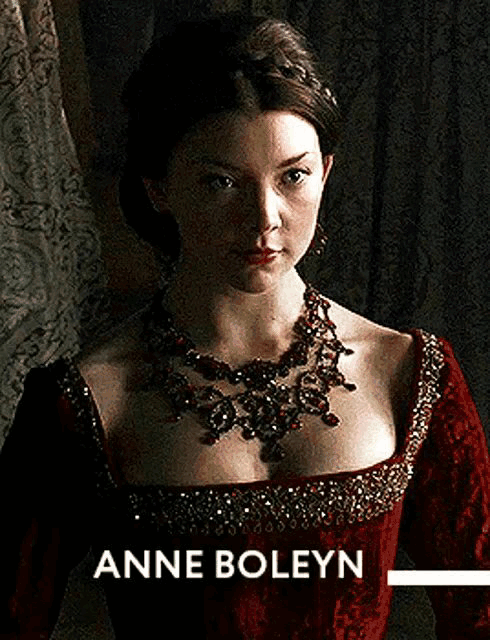

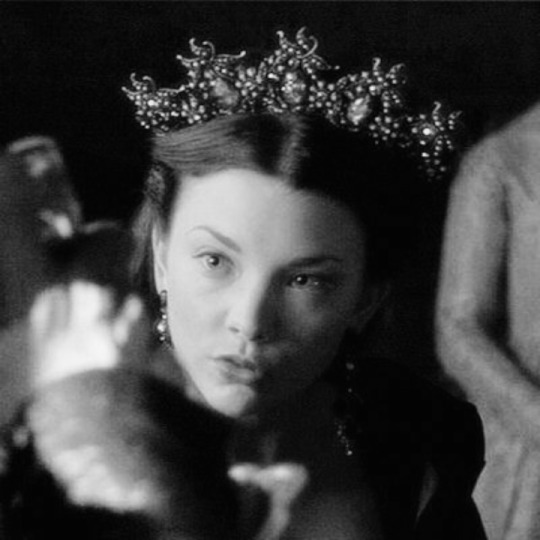


⠀⠀⠀⠀⠀⠀⠀⠀⠀⠀⠀⠀⠀❛the most happy❜
⠀⠀⠀⠀⠀⠀⠀⠀⠀⠀⠀⠀⠀
🕯THE TUDORS WEEK 2023 🕯
day five : best queen.
Natalie Dormer as Queen Anne Boleyn.
#TudorWeek2023#the tudors#showtime the tudors#natalie dormer#anne boleyn#history#henry viii#16th century#daily tudors#the tudor dynasty#period dramas#costume dramas#gifset#edit#the tudors edit#my mother forever#mother of cunts#cunty asf#period drama#thetudorsweek2023
65 notes
·
View notes
Text




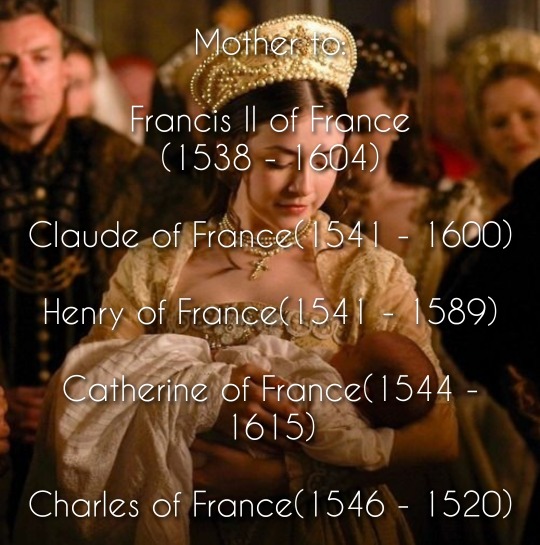

A happier life for Henry VIII's children. Part: 1.
Mary was the first surviving child of King Henry VIII of England from his first marriage to the Spanish princess Catherine of Aragon. The princess knew that she was not her parents' only child - all of her siblings died shortly after birth. The birth of a living and healthy child was a great happiness for King Henry and Queen Catherine, even though the child was a girl. That is why she became the king's favorite daughter. When she was 12 years old, her father decided to divorce her mother. Catherine did not resist the king's decision for a long time, but accepted the inevitable and agreed to the divorce with favorable terms. For this, the king, as promised, retained for Mary the status of princess and allowed the former spouse to communicate with his daughter. After the divorce for Mary little changed, she continued to grow up in the love of her father and mother, often visited both parents. The princess did not like her father's second wife, but did not show it. Anne Boleyn did not meet Henry's expectations, so he sent her to a convent under strict supervision. The king also wanted to declare Princess Elizabeth illegitimate, but Mary stood up for her sister and convinced her father not to do so. Soon the king married Jane Seymour, and a year after the wedding she gave him a long-awaited son, whom the happy father named Edward. In honor of this joyous event, Henry organized a grand feast that lasted for a whole week. In the same year, Princess Mary married Prince Henry, heir to the French throne. Before meeting his future wife, the dauphin had a love affair with Diana de Poitiers, but when he first saw his betrothed, he fell madly in love with her. Henry immediately severed all ties with Diana and was faithful to his wife until his death. The marriage of Mary and Henry turned out to be very happy. They had five children:
Francis II of France(1538 - 1604). Nicknamed "The Peacemaker" for the foreign policy calm during his reign. During his reign, France did not wage a single war. Husband of Helena of Austria, they had a good relationship. In marriage 7 children were born: Mary, Louis XIII, Anne, Henry, Christina, Philip, Gaston.
Claude of France(1541 - 1600). Queen of Spain. In 1556 she became the wife of Philip II. The spouses loved each other despite the big difference in age. They had 5 children: Philip III, Isabella, Joanna, Ferdinand, Diego.
Henry of France(1541 - 1589). Duke of Orleans. Was a favorite son for his mother, as from a young age showed a keen interest in religion. And when he became older he decided to devote his life to the service of God. He was not married and had no children.
Catherine of France(1544 - 1615). Archduchess of Austria. Favorite sister of Francis II. Was the second wife of Ferdinand II of Austria. The spouses did not love each other, but respected each other. In marriage 3 daughters were born: Anne, Mary, Eleanor. After the death of her husband returned to her homeland.
Charles of France(1546 - 1620). Duke of Angoulême. Because of his dissolute lifestyle he had conflicts with his mother. He married his cousin Jane, daughter of King Edward VI of England. The married life of Charles and Jane was not happy, because of his constant cheating. The marriage produced 4 children: Gedeon, Charlotte, Michelle and Cesar.
While in France, she did not forget about her family and maintained a close correspondence not only with her parents, but also with her second stepmother, because of the warm and close relationship between them. Before leaving, Mary and Jane had great difficulty convincing the king to bring Elizabeth to the palace so that she would not feel lonely. Henry initially had no paternal feelings for his second daughter, but was later able to develop a warmth for the girl. In 1540, Dauphine learned that her mother had died. She could not come to her funeral, as she was pregnant with her second child, but due to severe stress she had a miscarriage. Because of these events, the princess fell into depression, she did not leave her chambers and hardly ate anything. Her husband was with her all this time and provided as much support as possible, but when he realized that he could not cope, he invited Jane to help. She couldn't stay away and convinced Henry to let her go to Mary. After a few months, Mary recovered and all three returned to England. The king greeted his wife, daughter and son-in-law warmly. And the princess was finally able to honor her mother. She also spent time with her brother and sister because she missed them during the 6 years of absence. When Mary returned to France, she was already pregnant with her third child, and nine months later she gave birth to twins. Five years passed.During this time, Mary and Henry became king and queen of France and had two more children. They successfully ruled the kingdom. Shortly before his death, Henry 8 appointed his eldest daughter as regent under his young son. The queen excelled in her duties as regent and pursued a mild policy toward her subjects. When she realized that Edward was already capable of ruling on his own, she placed the power in his hands and returned to France. In 1559, King Henry of France fell from his horse while hunting and died. Mary mourned the death of her beloved husband for a long time and wore mourning for him for the rest of her life. She warmly remembered the 22 happy years they gave to each other and loved to tell her grandchildren about it. Mary often came to visit her brother, and the two developed a warm relationship. The dowager queen of France died in 1580. She was buried next to her husband Henry II in the Abbey of Saint-Denis.
Source:
Pinterest: Dinastia Tudor & Reyes Católicos, Bit_na
Tumblr: the borgias ITALIA
#history#royal family#royalty#history au#au#royal#henryviii#the tudors#british royal family#16th century#catherine of aragon#anne boleyn#jane seymour#marytudor#house of tudor#tudor dynasty#tudor england
25 notes
·
View notes
Text
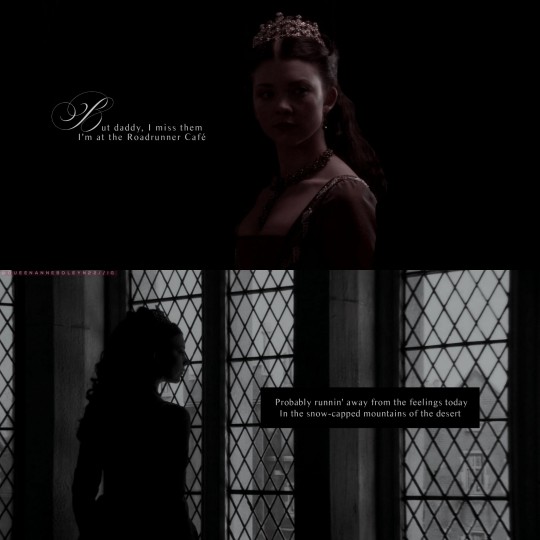
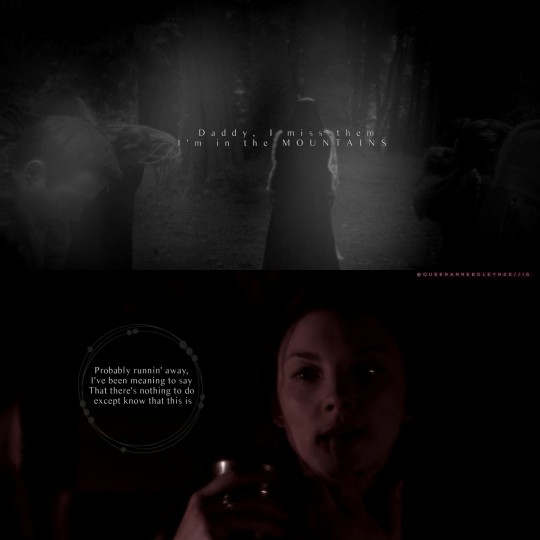

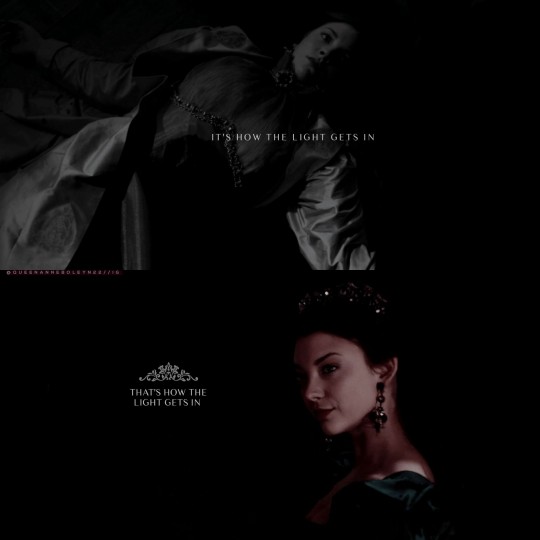

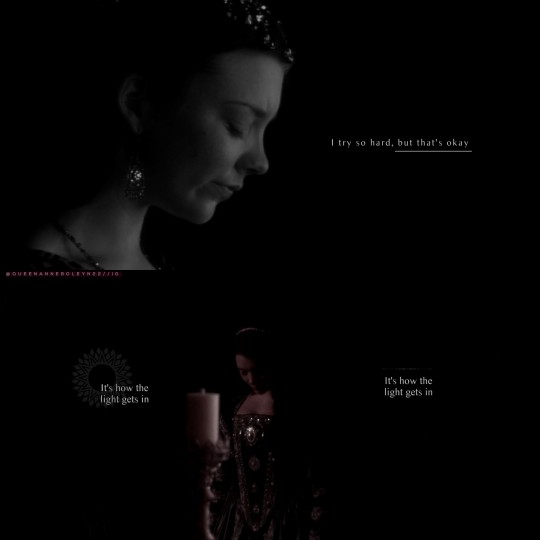
“She is not of ordinary clay,” Henry had once said to Wolsey, explaining his infatuation for Anne, a comment that most historians take to refer to Anne’s unwillingness to engage in sex before marriage. But perhaps Henry, tired of docile mistresses and a wife whose undeniable intelligence was cramped by obedience to role and religion, found Anne’s independence and ingenuity of mind among those qualities that made her extraordinary. Certainly, he was more than willing—without any “wheedling” or “crying”—to accept the help she offered in strategizing for the divorce. Even David Starkey notes this. “In the divorce, Anne and Henry were one. They debated it and discussed it; they exchanged ideas and agents; they devised strategies and stratagems. And they did all this together.” For Starkey, this made them “Macbeth and Lady Macbeth”—and Anne, “like Lady Macbeth, frequently took the initiative.” But this venomous, anti- Anne gloss on the partnership of Henry and Anne skips over the most unusual thing about it: that it was a partnership. And an unusually “modern” one that did not fit into any of the available cultural patterns. It took a woman “not of ordinary clay” to shatter the mold—and a king who was glad to see it in pieces. For the moment.
#perioddramaedit#anne boleyn#the tudors#lyrics#history#susan bordo#anneboleynedit#tudorsedit#the tudor dynasty#tudorerasource#tudor history#lana del rey#kintsugi#perioddramasource#periodedit#userthing#userbbelcher#natalie dormer#nataliedormeredit#16th century#english history#anne boleyn and henry viii#tudor dynasty#did you know there’s a tunnel under ocean blvd#ldredit#lyricsedit#historical figures#historyedit#lady macbeth#king henry viii
95 notes
·
View notes
Text
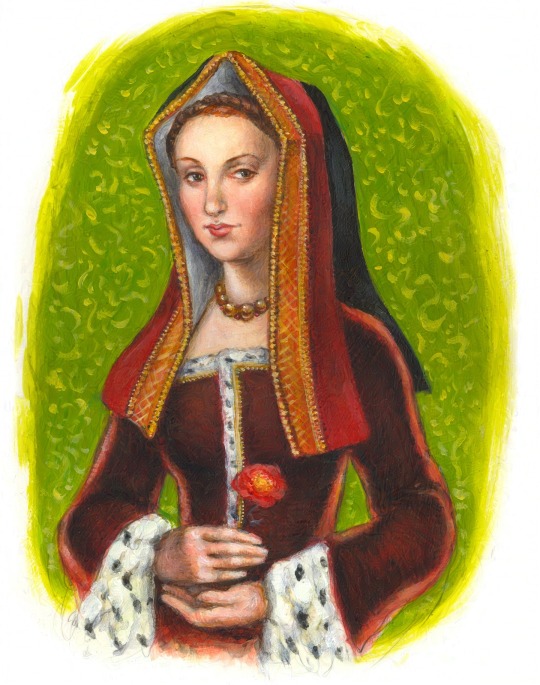
A long-delayed commission for the kind and extremely patient @branloaf. It's Margaret Tudor, taken from this contemporary sketch here, from the Recueil d'Arras.
#margaret tudor#tudors#art#illustration#tudor dynasty#commissions#painting#traditional painting#16th century#tudor
89 notes
·
View notes
Text
Tudor Week 2024: your favourite Tudor saying...
"Bite at the stone, not the hand at throws it." - Elizabethan / Late Tudor Proverb (or in modern language: don't shoot the messenger)

@dailytudors

#tudorweek2024#dailytudors#meeraedits#elizabeth i#elizabeth tudor#elizabeth i tudor#elizabeth i of england#queen elizabeth i of england#my edit#mine#history#16th century#tudor house#tudor period#tudor era#tudor england#scottish history#english history#tudors#tudor history#women in history#16th century history#house of tudor#tudor dynasty#elizabethan era
6 notes
·
View notes
Text
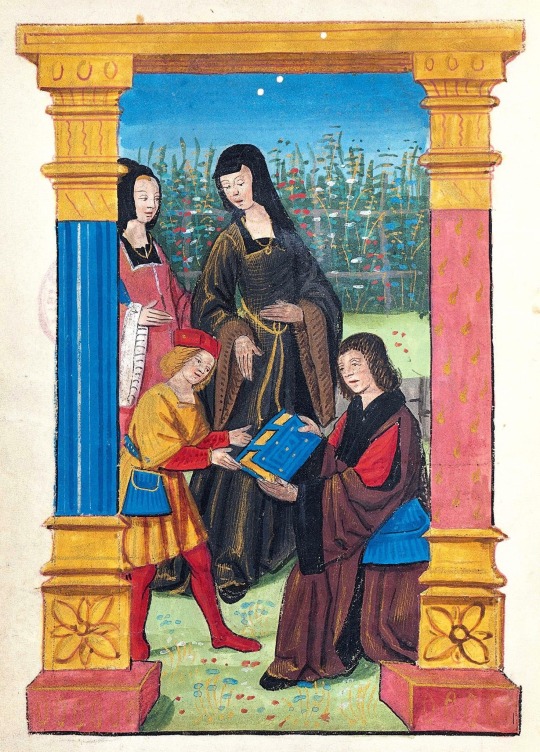
François I received a book in the presence of his mother, Louise de Savoy, and sister, Marguerite d’Angoulême.
Date: 1503.
Source: National Library of France
Description taken from here:*
“Master of Philippe de Gueldre, "Antoine Vérard presents his book to François d'Angouleme, in the presence of Louise de Savoie and Marguerite d'Angoulême, in Octavien de Saint-Gelais, Le Séjour d'honneur, Paris, Antoine Vérart
BnF, Rare Book Reserve, Venom 2239, fol. 1st
In 1506, after his engagement to Claude de France, daughter of Louis XII, François d’Angouleme is summoned to court as heir to the throne. It is no doubt on this occasion that the Parisian bookwire Antoine Vérard is preparing for him a personalized copy of his edition of the Séjour d'Honneur, allegory describing the court of Charles VIII. In the light of dedication, the young prince receives the volume of Vérard's hands, under the gaze of his mother, Louise de Savoie, and a young girl who is undoubtedly his sister, Marguerite.”
*facebook group entitled “enluminures Europe—VIe -XVIe s.”
#16th century France#16th century#XVIe siècle#enluminures#Valois-Angoulême dynasty#Valois dynasty#House of Valois#House of Valois-Angoulême#Maison de Valois#Maison de Valois-Angoulême#Louise de Savoyie#Louise of Savoy#marguerite de navarre#Marguerite d’Angouleme#François Ier#François I#Francis I of France#François de France#primary sources#illuminated manuscript#Louis XII#claude de france
12 notes
·
View notes
Text
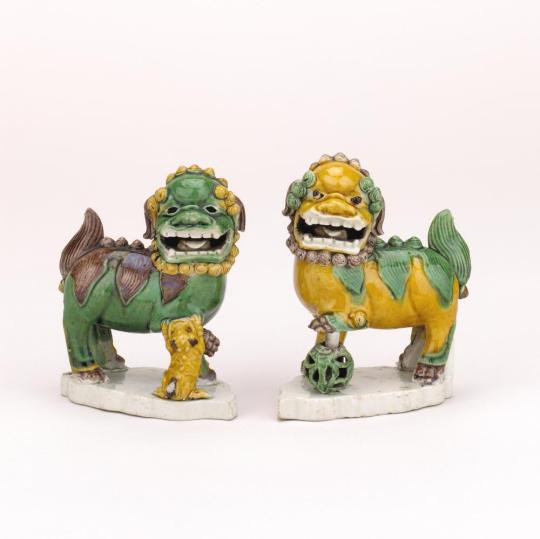
▪︎ Pair of lion-dogs or ‘dogs of fo’.
Period: Qing dynasty; Reign of Kangxi
Date: 1662-1722
Place of origin: China: Jiangxi (province); Jingdezhen
Medium: Porcelain
#17th century#art#16th century#history#decorative arts#history of art#asia#asian#china#chinese#porcelain#dogs#dogs of fo#lion dogs#qing dynasty#Kangxi#1662#1722
63 notes
·
View notes